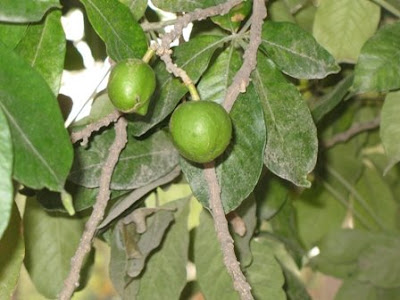 The Sycamore Maple tree (species: Acer pseudoplatanus) is a member of the Maple tree family and occurs naturally in Europe and Southwestern Asia. The images in this blog were taken of a tree in Spain. The scientific name "Acer pseudoplatanus" is composed of two latin names. The first "Acer" means Maple and identifies the genus to which this tree belongs. The second part "pseudoplatanus" means "false Plane" or "false Sycamore". This is a reference to the fact that this tree can be easily confussed with "Sycamore" trees in the genus "Platanus". The "London Plane", for example has very similar leaves to the Sycamore Maple.
The Sycamore Maple tree (species: Acer pseudoplatanus) is a member of the Maple tree family and occurs naturally in Europe and Southwestern Asia. The images in this blog were taken of a tree in Spain. The scientific name "Acer pseudoplatanus" is composed of two latin names. The first "Acer" means Maple and identifies the genus to which this tree belongs. The second part "pseudoplatanus" means "false Plane" or "false Sycamore". This is a reference to the fact that this tree can be easily confussed with "Sycamore" trees in the genus "Platanus". The "London Plane", for example has very similar leaves to the Sycamore Maple.
 This tree can be easily identified as a Maple by its winged seeds (called samaras). Each seed has a "wing" that is about 1-1.3 inches long and is paired with another seed. These pairs in turn a grouped in a cluster of about 15-30 pairs. They are green at first and then turn a tan colour when mature. The wings help these seeds be dispursed by wind action.
This tree can be easily identified as a Maple by its winged seeds (called samaras). Each seed has a "wing" that is about 1-1.3 inches long and is paired with another seed. These pairs in turn a grouped in a cluster of about 15-30 pairs. They are green at first and then turn a tan colour when mature. The wings help these seeds be dispursed by wind action. Another way to tell the difference between the Sycamore Maple and the true Sycamore or Plane tree is by the bark. True Sycamores and Planes have a smooth bark that peels off in large sections.
Another way to tell the difference between the Sycamore Maple and the true Sycamore or Plane tree is by the bark. True Sycamores and Planes have a smooth bark that peels off in large sections. The image below is of an old drawing of this tree species.
The image below is of an old drawing of this tree species. Other Maples that I have blogged about are...
Other Maples that I have blogged about are...Vine Maple
Big Leaf Maple
Red Maple
Boxelder Maple
Montpellier Maple
































